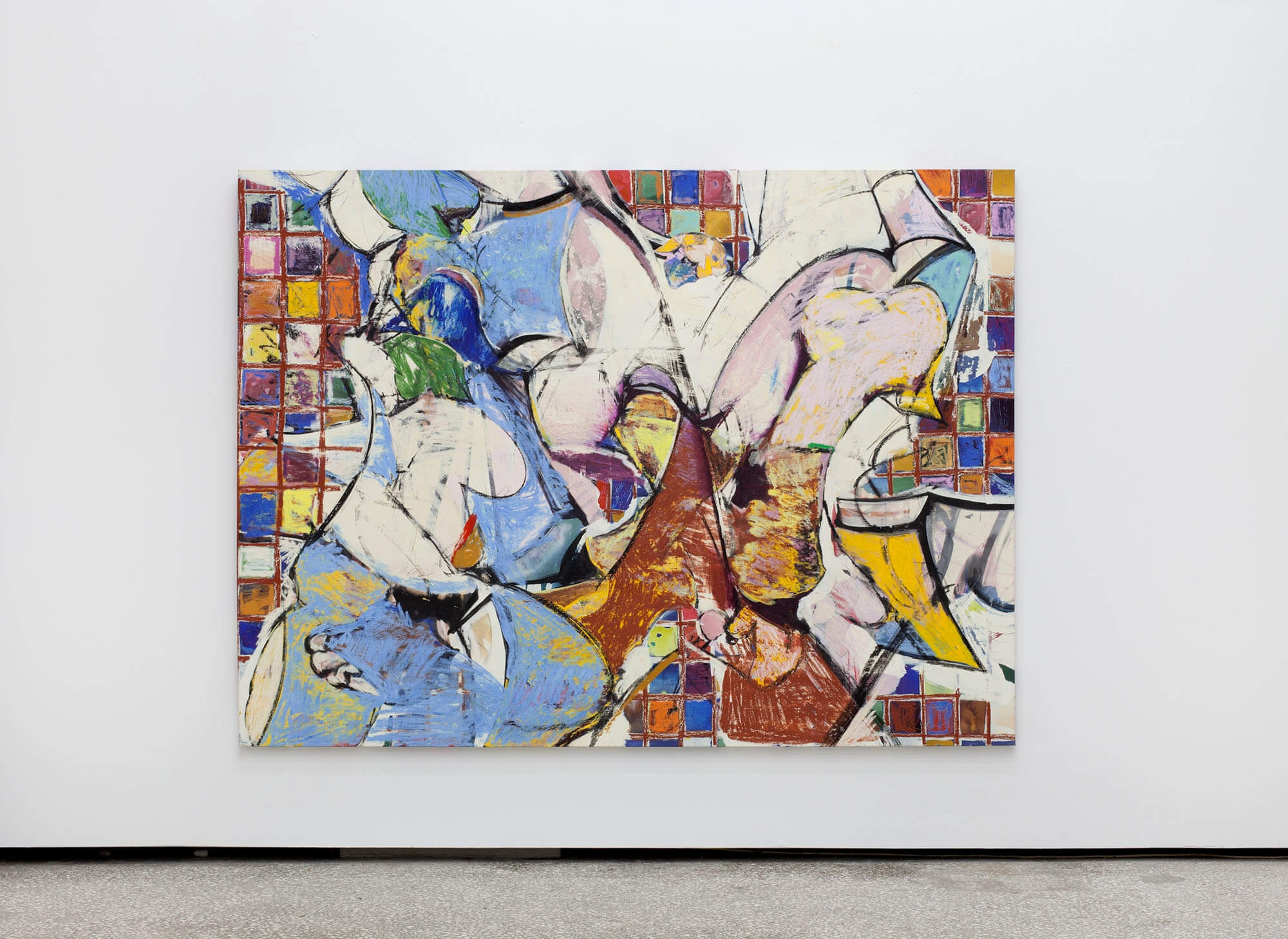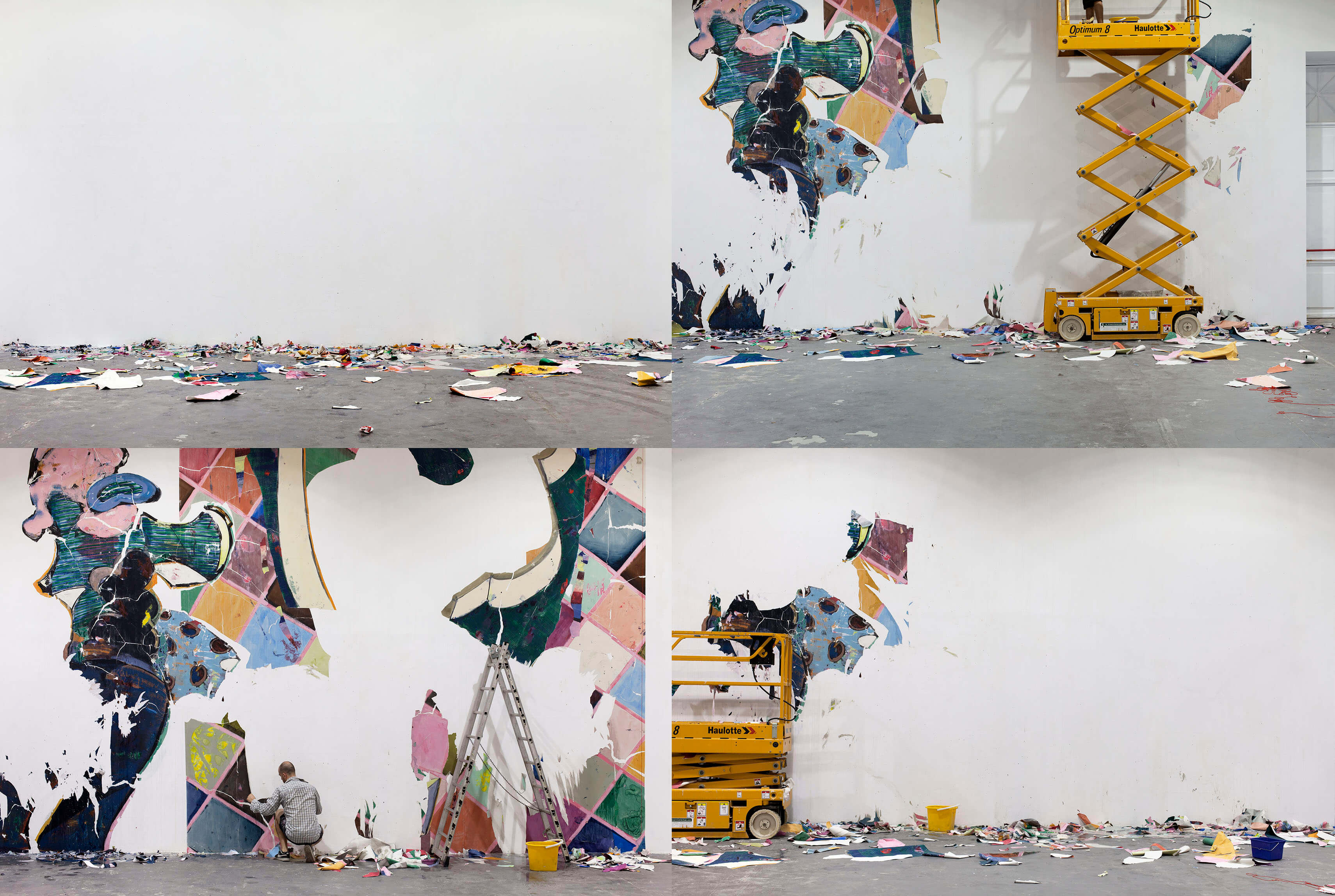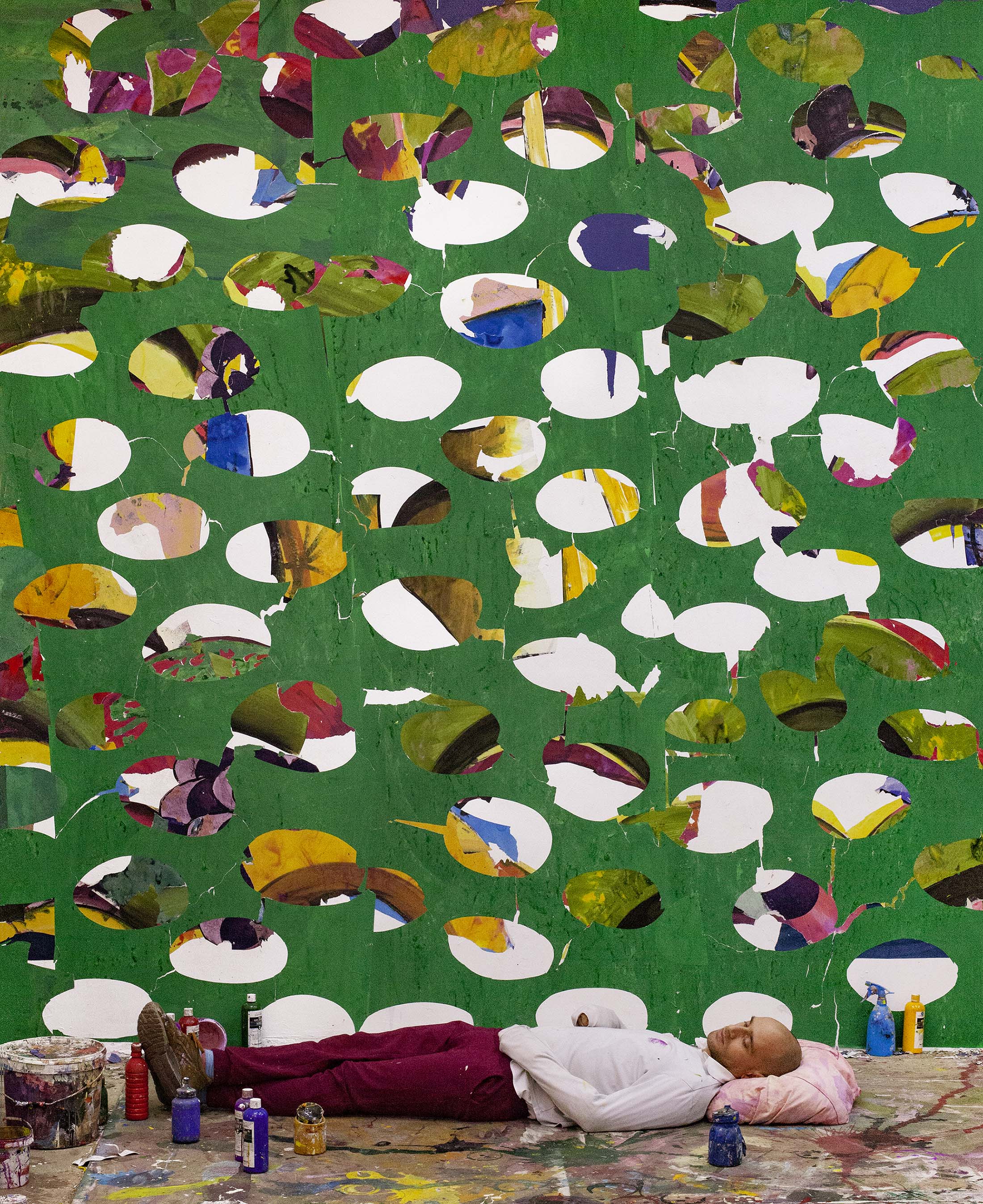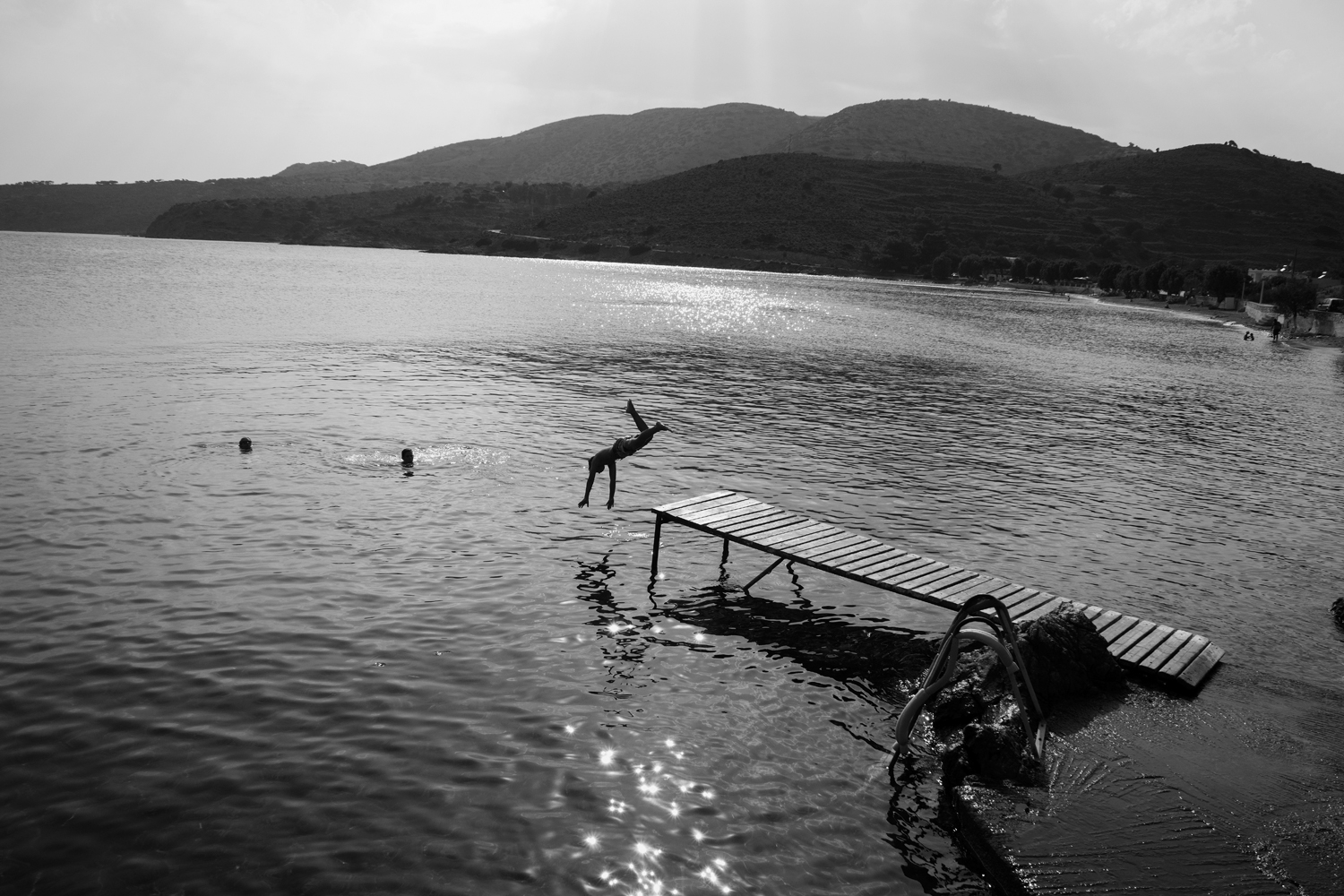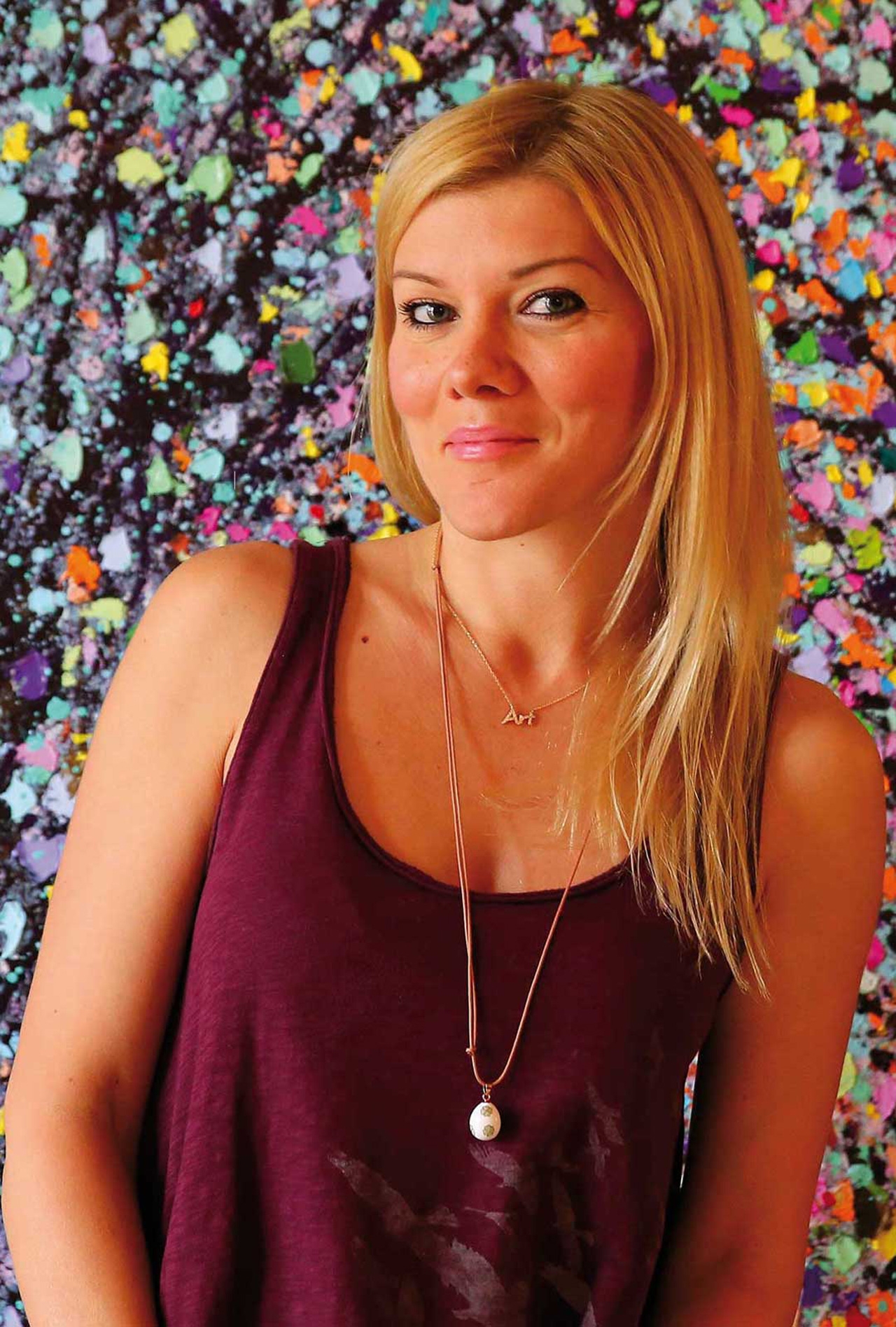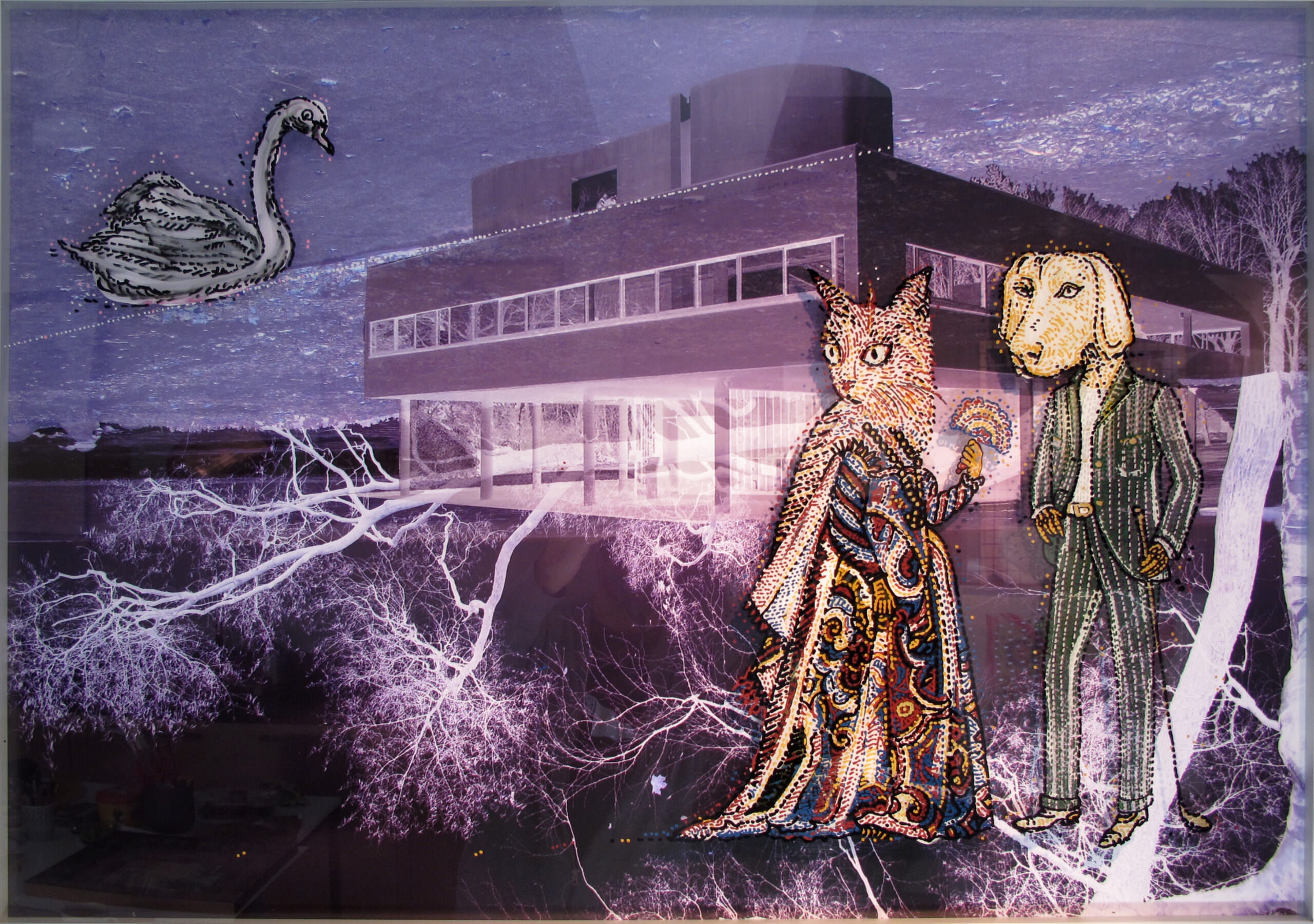The desire to transcend the everyday, to transcend the self, is central to the work of Alexandros Vasmoulakis.
Strongly influenced by the subcultural aesthetics of psychedelia and rave as well as the classical form of the mandala, Vasmoulakis sees these visual and cultural systems as ones cohering through an equivalent yearning to reach pure awareness, to achieve interconnectedness, and to attain a dissolution of the singular ego.
Whilst an assured rationalist at heart, then, Vasmoulakis utilizes formal, conceptual, and practical approaches to engage with this concept of the transcendental in his practice.
Striving to surpass the reductive binaries of either the representational or the abstract, the artist seeks to explore the basic qualities of our world beyond the dense baggage of the conscious mind, beyond the preconceptions and presumptions that the socio-cultural embeds in our bodies.
Rather than an embracement of the purely visual alone— of the superficially surrealist or of a kaleidoscopic kitsch—it is through a painstaking, meditative technique that Vasmoulakis’s works emerge, an artistic process in which creation and destruction go hand in hand and in which conscious control is surrendered.
Starting all of his paintings through working directly onto the canvas in acrylic and without the use of studies or sketches, Vasmoulakis draws continuously in an unplanned and unstructured direction, entering into a focused, intuitive flow until a composition begins to naturally emerge.
Playing with the configurations continuously (even changing the entire orientation of the work) and keeping these scores of layers and (mis)directions present on the canvas, once he reaches a formal impasse the artist will then use sandpaper, scrapers, knives, and a high-pressure water cleaner to remove parts of the applied paint and excavate beneath the present surface. This orgasmic ritual of destruction not only breaks through the circular feelings of enthusiasm, frustration, perplexment, and dejection that the process delivers, but likewise serves to relinquish the artist’s own volition and
control over his works. Here, then, serendipity comes to the forefront.
Alongside this process of creative-destruction in which the historical layers of the painting are brought back to the forefront, Vasmoulakis also employs a drawing implement which contains an equally potent historical materiality:
Painting the majority of his works with handmade crayons—a medium which, alongside oils, make up around ninety percent of the final paintings—this tool is manufactured by the artist himself and produced from the remains of beeswax votive candles the artist collects from monasteries all over the world. Melted and mixed with linseed oils and pigments, the physical structure of his paintings thus contains a rich spiritual history in themselves, a materialized constituent of the believers’ prayers.
Whilst not spiritual himself, then, the wax forms a layer in which this belief, this yearning for the transcendent, is materially recycled.
The final key element of Vasmoulakis’s works, however the unique, ephemeral, handmade wallpaper, provides another vital link to the transcendental position that the artist means to engage.
Here it is the interdependence, the symbiosis between wallpaper and canvas the artist is interested in, the relation between the canvas and its environment, the inside and the out. For Vasmoulakis, it is the sense of oneness, the inseparability between the two artifacts that is critical.
The wallpaper thus acts not as the surrounding frame to the work (as binary opposite, as parergon to ergon), but rather as a single element of the larger whole.
Like the process of meditation, the canvas and its wallpaper, like the inside and outside of the self, are understood as a single element, an immutable, material whole.
The end result of this process, the raucous orgy of colors and shapes that the artist’s works provide, thus aim to exceed the known qualities of our material world whilst likewise producing images and objects that simultaneously feel part of it.
Often suggestive of the botanical (whether flowers or fruit), of organisms seen at a microscopic level, or perhaps of the profound visuals emergent from a hallucinatory experience, they present us with a biomorphic mass bursting with life, a formal accumulation suggestive of a new species or genus, yet one in which the world becomes both strangely perceptible and uncannily unrecognizable for both the viewer and the artist at the same time. What is thus given to us here is not a concept of the transcendental but an encounter with, an urge toward, the transcendental itself.
What is given, like the mandala so important to the artist, is a layered journey moving from the outside to in, a series of pre-objective forms whose energy emerges through process and whose texture sits in tension between figuration
and pure form.
Rafael Schacter
Anthropologist

